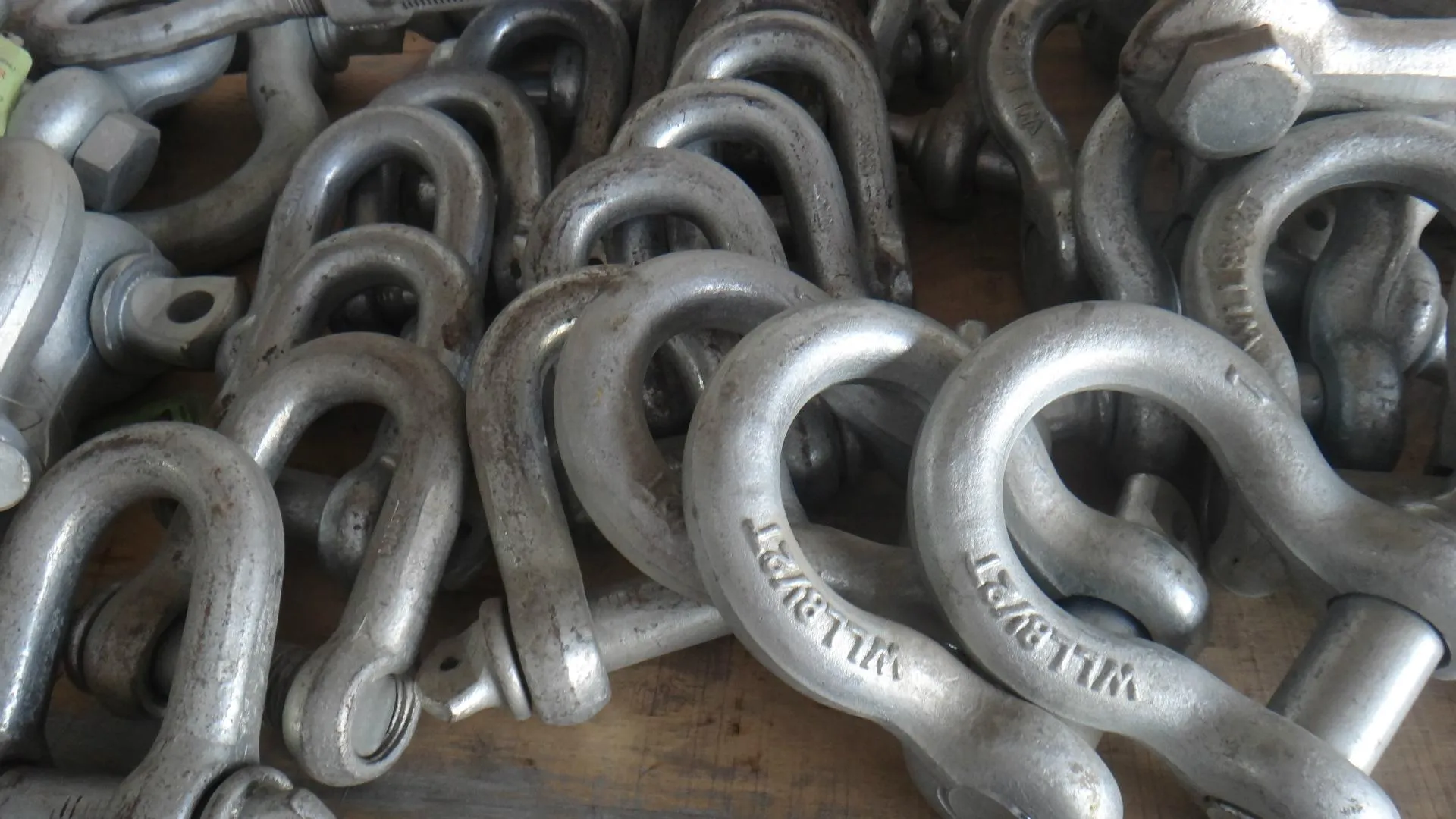ಸುದ್ದಿ
ಸೆಪ್ಟೆಂ . 11, 2024 16:52 ಪಟ್ಟಿಗೆ ಹಿಂತಿರುಗಿ
Mastering the Art of Shackle Selection and Usage
In the world of lifting and rigging, the safety and efficiency of your operations hinge on choosing and maintaining the right equipment. One critical component is the shackle, a seemingly simple but vital part of your rigging system. This guide delves into the importance of understanding type shackle, different types of shackles, lifting shackles, and the shackle of a lock, ensuring you have the knowledge to make informed choices and keep your operations secure.

Choosing the Right Type Shackle for Your Needs
The type shackle you select can significantly impact the safety and effectiveness of your lifting operations. Shackles come in various designs and materials, each suited to different tasks and load capacities. For instance, D-shackles (or bow shackles) are ideal for heavy loads and general-purpose use, while Chain shackles are designed for connecting chains. Understanding the characteristics and applications of each type shackle is crucial in selecting the most appropriate one for your specific needs, ensuring both safety and efficiency in your lifting operations.
Exploring Different Types of Shackles for Optimal Performance
Understanding the different types of shackles available is essential for selecting the right one for your lifting tasks. Common varieties include bow shackles, which are known for their strength and versatility, and chain shackles, which are ideal for use with chains. Pin shackles offer easy assembly and disassembly, while screw pin shackles provide additional security with their threaded pin. Each type has distinct advantages and is suited for different applications, so choosing the right type can enhance both safety and operational efficiency.
Ensuring Safety with Proper Use of Lifting Shackles
Lifting shackles are designed specifically for securing and lifting heavy loads. Proper usage of lifting shackles is crucial to prevent accidents and ensure a smooth operation. It is important to choose lifting shackles that are rated for the load you intend to lift and to regularly inspect them for signs of wear or damage. Ensure that shackles are properly aligned and that the load is evenly distributed to avoid undue stress on the shackle. Adhering to these practices helps in maintaining the integrity of the lifting equipment and ensuring a safer work environment.

The Role and Safety of the Shackle of a Lock
The shackle of a lock plays a crucial role in security applications, including securing lifting equipment and other critical components. The design and strength of the shackle are pivotal in ensuring that locks provide the necessary security. Whether you are securing a load or protecting valuable equipment, the shackle of a lock must be robust and reliable. Regular maintenance and proper use are key to ensuring that the shackle of a lock performs effectively and maintains its security function over time.
Maintenance Tips for Shackles to Ensure Longevity and Safety
To keep your shackles in optimal condition, regular maintenance is essential. This applies to all types, including type shackles, lifting shackles, and the shackle of a lock. Inspect shackles frequently for signs of damage, corrosion, or deformation. Proper cleaning and lubrication are necessary to prevent wear and extend the lifespan of your shackles. Always follow manufacturer guidelines for maintenance and ensure that shackles are used within their rated capacities. Adhering to these practices helps prevent accidents and prolongs the effectiveness of your rigging equipment.
-
Small components of lifting ring nuts with large load-bearing capacity
ಸುದ್ದಿNov.24,2025
-
Flower basket bolts inject stable strength into your project
ಸುದ್ದಿNov.18,2025
-
Although the lifting ring is small, its function is enormous
ಸುದ್ದಿNov.12,2025
-
Lifting shackle: The indispensable "safety connecting ring" in lifting operations
ಸುದ್ದಿNov.05,2025
-
Full analysis of lifting chain technology and application standards
ಸುದ್ದಿOct.31,2025
-
Card head usage guide
ಸುದ್ದಿOct.28,2025
